This manifesto from August 1914 sets out the goals of Cumann na mBan. Photo: © Mary MacSwiney Papers, UCD Archives

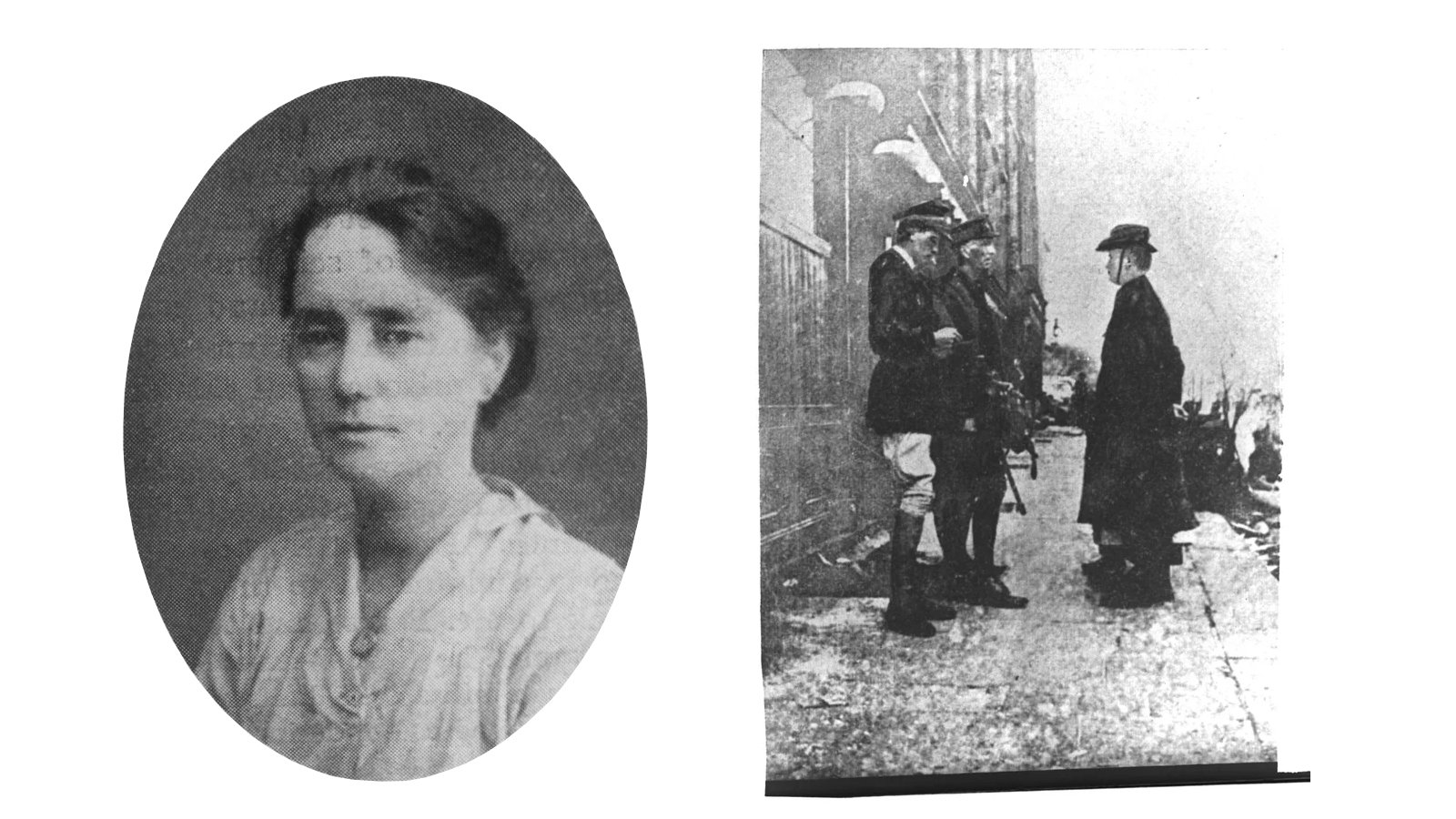
Elizabeth O'Farrell was a key figure in Cumann na mBan. She was present when Padraig Pearse surrendered to the British during the Easter Rising of 1916. © Glasnevin Cemetery Exhibition
Less likely to be searched or arrested than their IRA counterparts, the role of women as scouts, intelligence gatherers and dispatch carriers was vital to the survival of the republican communications network during the War of Independence.
As Cumann na mBan officer in Leitrim Brigid Doherty explained, 'we could get through very often with dispatches where men would not have a hope. The enemy did not always have lady searchers with them and then only in very limited numbers.'

Photo: © Irish Military Archives, BMH CD216 3
Along with other nationalist organisations, Cumann na mBan was banned in September 1920. As a banned organisation, Cumann na mBan held their annual convention in October 1920 in Whitefriar Street Carmelite church, Dublin.Those standing represent the national leadership of the organization. Left to right, Mabel Fitzgerald, Mary MacSwiney, Louise Gavan Duffy, Miss O'Rahilly, Mrs Áine O'Rahilly, Máire O'Rahilly, Mrs Pearse, Countess Markievicz, Kathleen Clarke, Áine Ceannt, Nancy Wyse Power, Madge Daly, Elizabeth Bloxam, Jennie Wyse Power, Fanny Sullivan and Lily O'Brennan. Photo: © Irish Military Archives, BMH CD216 3
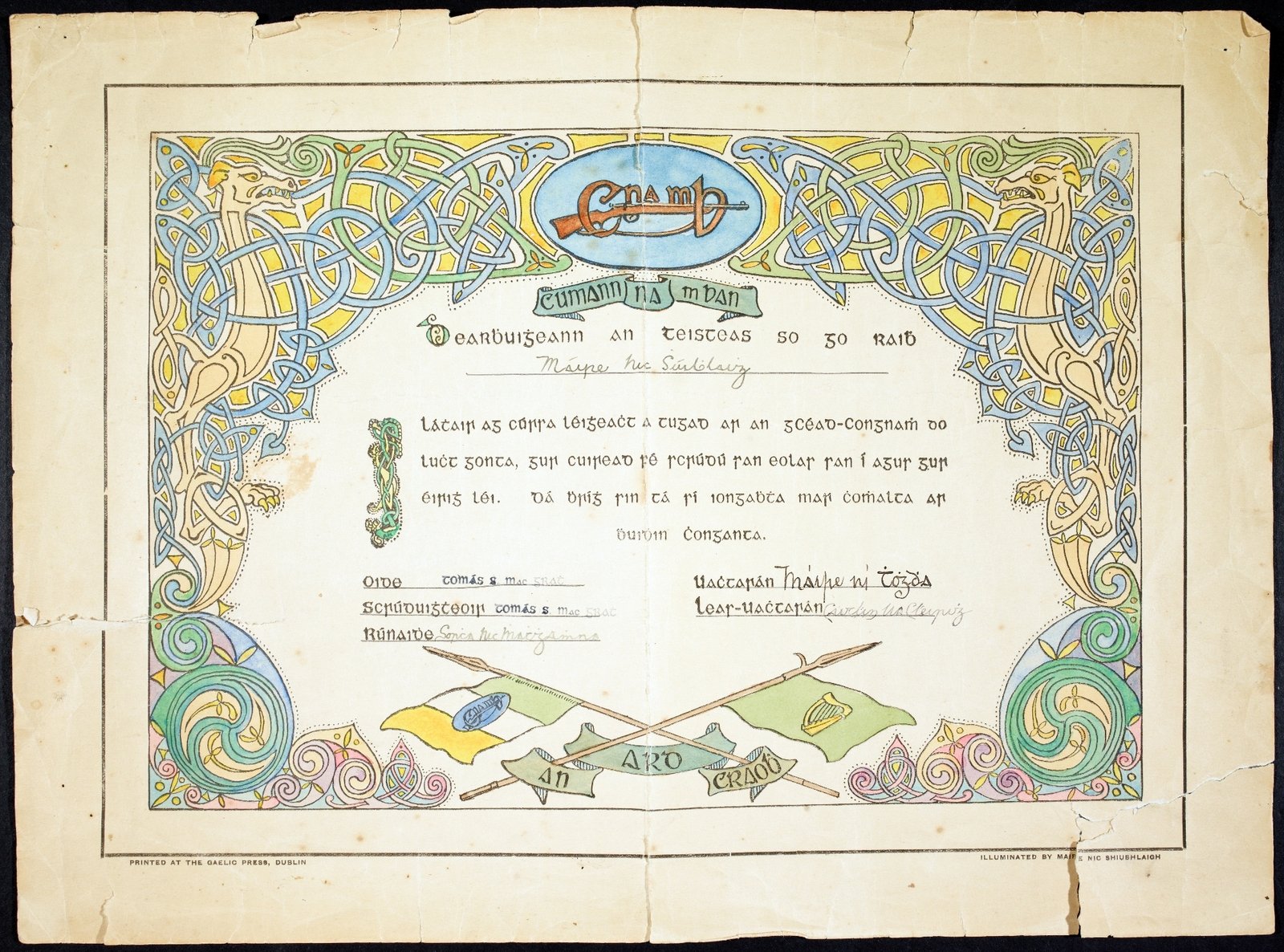
A first aid certificate awarded to Cumann na mBan member and AbbPhoto: © National Library of Ireland
A First Aid certificate awarded to Cumann na mBan member and Abbey Theatre actress Máire Nic Shiubhlaigh (born Mary Walker). Image courtesy of the National Library of Ireland
Socialising with the enemy was not approved of, as this handbill issued by Cumann na mBan in 1920, urging young women not to consort with British forces, shows. Image courtesy of the National Library of Ireland. Photo: © National Library of Ireland

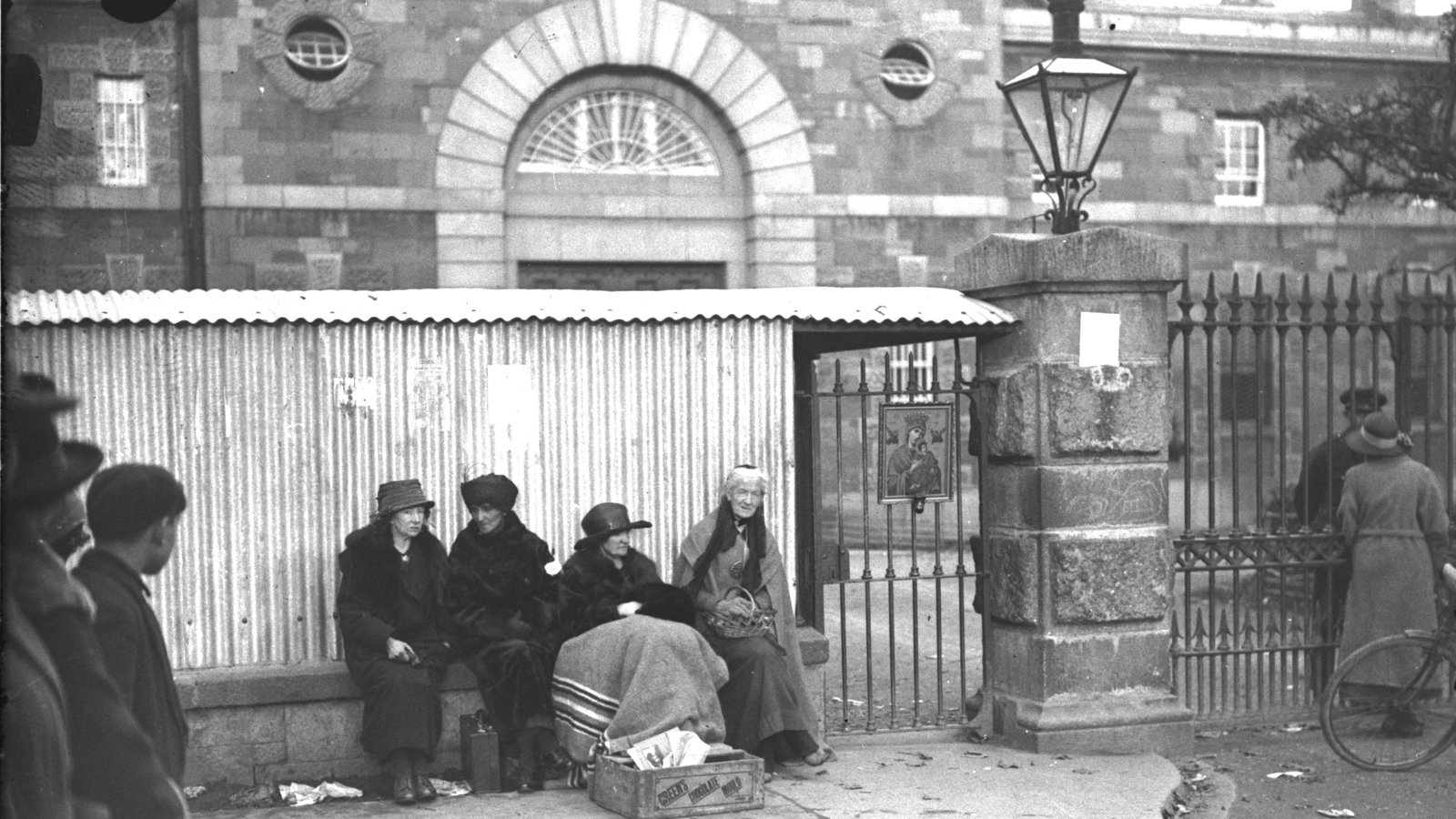
During the 1920 Hunger Strikes, Cumann na mBan played a major role in the protests. This photograph shows an unknown woman and Cumann members Maud Gonne MacBride, Mary MacSwiney and Charlotte Despard protesting outside Mountjoy during the hunger strikes in 1920. Protesting Outside Mountjoy, © RTÉ Archives
Cumann na mBan member May Gibney in her uniform. Courtesy of Kilmainham Gaol Museum/OPW 19PO-1A22-27

Cumann na mBan member Kay Gibney in her 19PO-1A22-27
An unknown young woman wearing what is believed to be a Cumann na mBan badge. Image courtesy of the National Library of Ireland
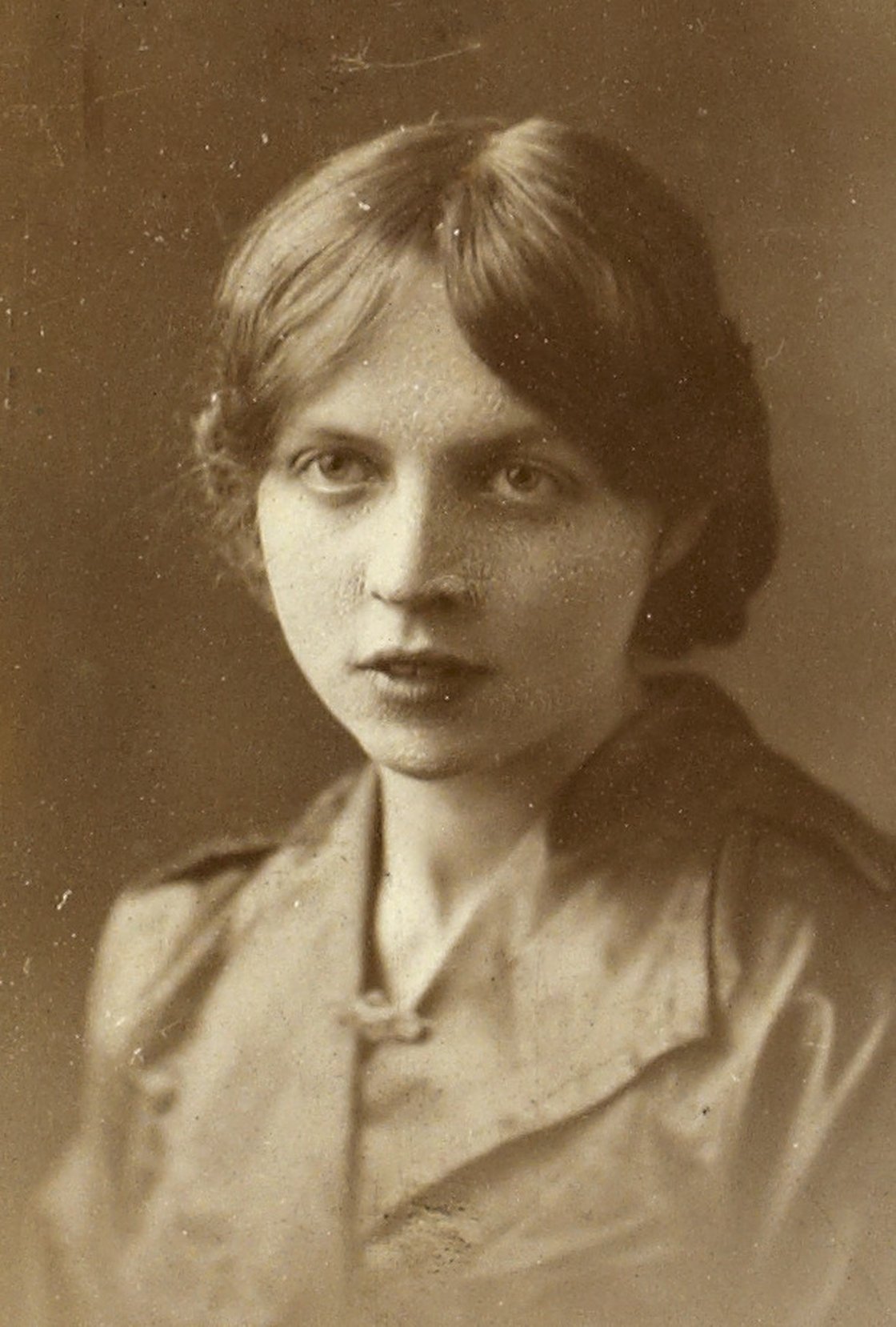
Unknown Cumann na mBan member, Photo: © National Library of Ireland
Eilís Uí Chonaill in Cumann na mBan uniform © Military Archives
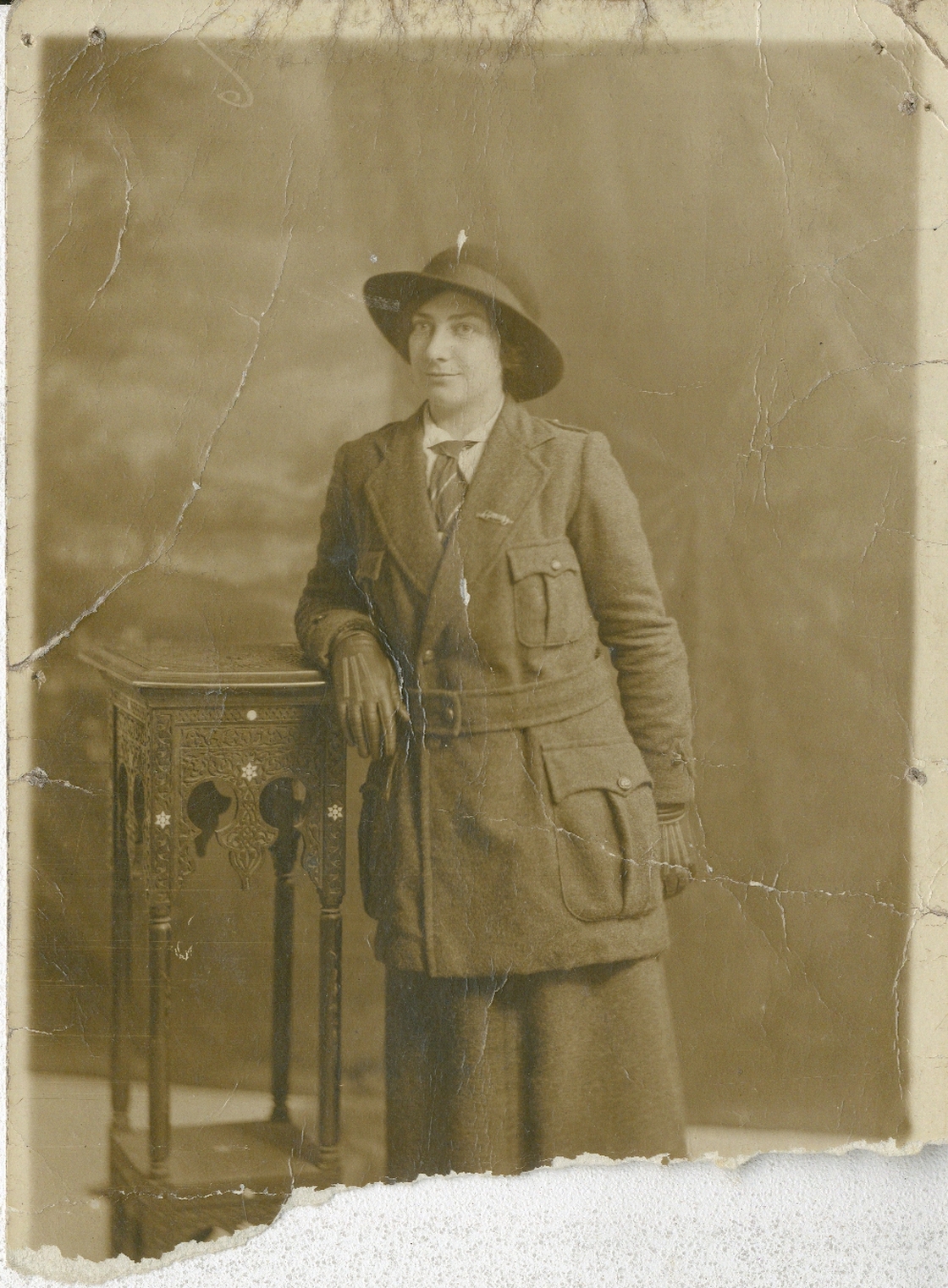
As the war progressed, the British authorities began to recognise the importance of Cumann na mBan women to the guerrilla war effort. The arrest of Linda Kearns in Sligo in November 1920 for transporting arms, ammunition and three IRA suspects meant that the organisation came under increased scrutiny.
Female searchers were introduced in late 1920 and raids on the homes of Cumann na mBan members became more frequent. Unlike the IRA men, the women of Cumann an mBan could not go on the run, leaving them exposed to threats, abuse and interrogations and later the full brutality of reprisals conducted by the Crown forces.

Cumann na mBan Cyclist Corps en route to Bodenstown. Photo: © Military Archives
Sighle Humphreys on her days in the Ranelagh Branch of Cumann na mBan
Humphreys would go on to be national vice-president of the organisation. She says the "solidarity was something extraordinary" and "nothing else mattered". They were not interested in developing the members as women, freedom was their priority. When asked if the IRA gave Cumann na mBan the recognition it deserves, she says that both the men and women were so full of idealism, that it never even entered their minds. This RTÉ radio interview with Hilary Orpen was originaly broadcast on 'Women Today' on 19 March 1984.
Cumann na mBan and the Civil War
At a special convention held in February 1922, the overwhelming majority (86 per cent) of Cumann na mBan members voted against the Anglo-Irish Treaty. They played an active role in the Civil War, working as couriers, drivers, signallers, nurses, doctors, and cooks, and were highly visible at the funeral of Cathal Brugha in 1922.
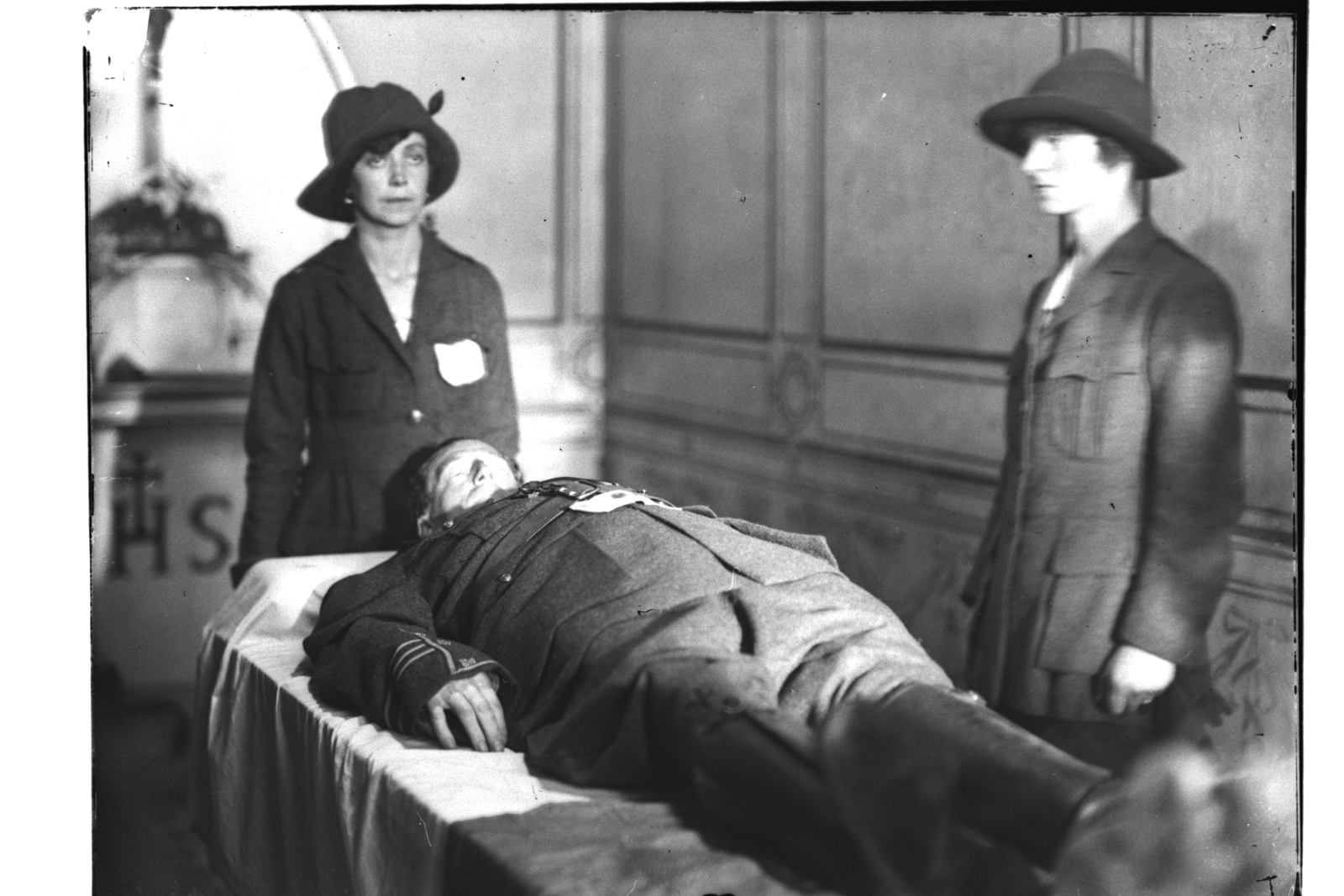
Two uniformed Cumann na mBan members stand guard over the body of Cathal Brugha in 1922. © RTÉ Archives
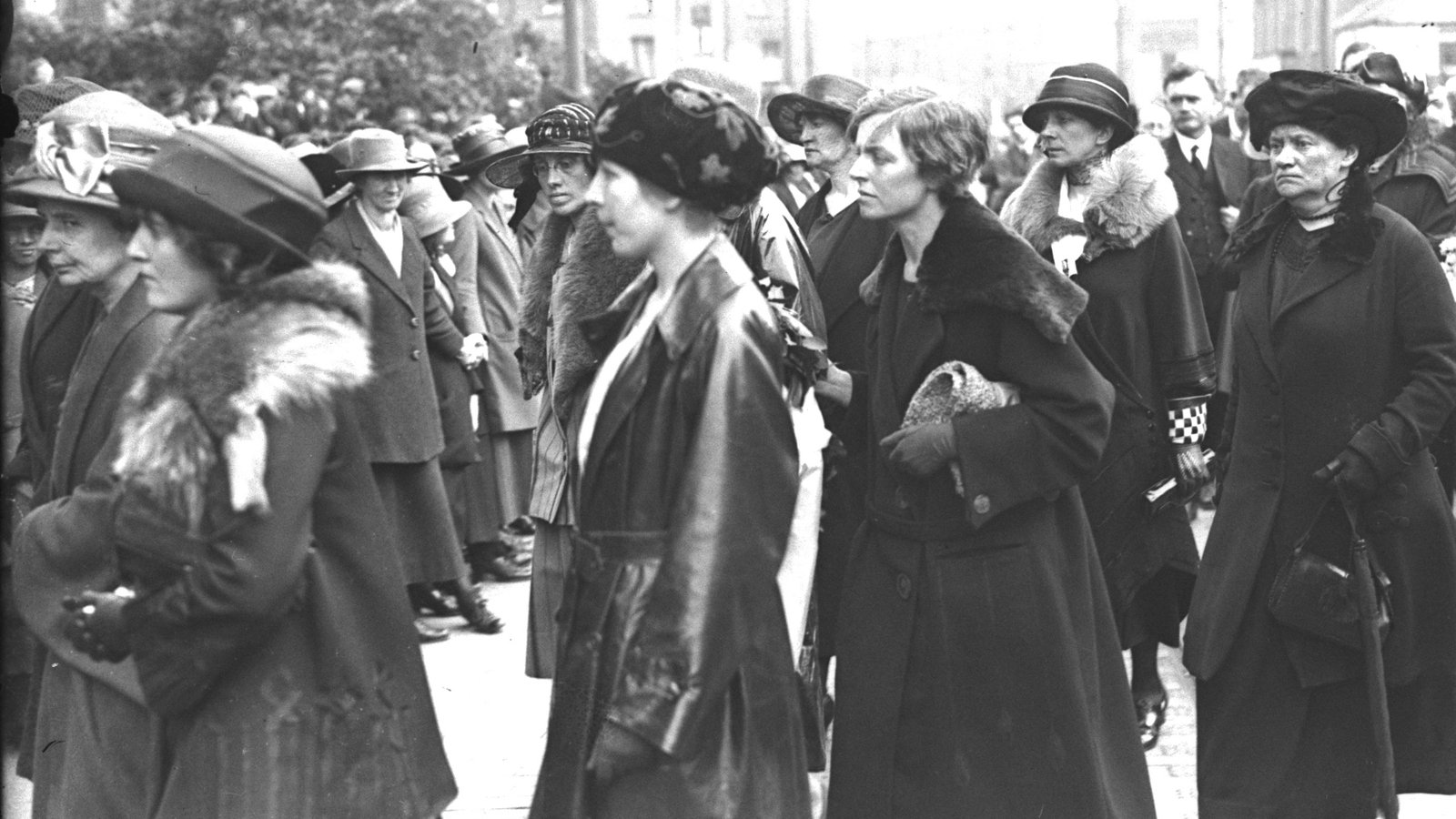
Cathal Brugha's funeral, 1922. Cumann na mBan women hold hands for crowd control. Caitlin Brugha and Muriel MacSwiney are pictured in the centre. Mary MacSwiney is on the far right. © RTÉ Archives